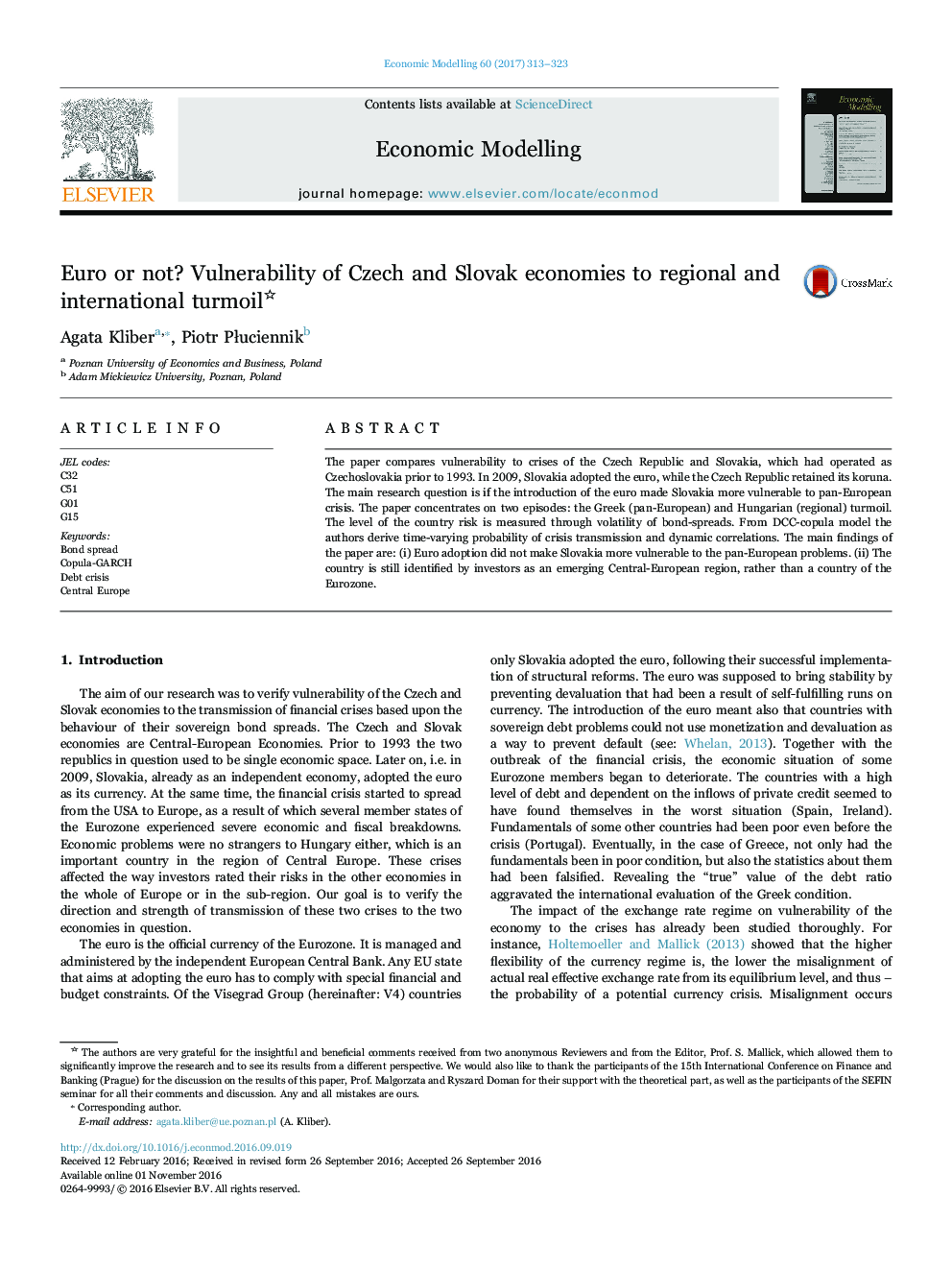| Article ID | Journal | Published Year | Pages | File Type |
|---|---|---|---|---|
| 5053208 | Economic Modelling | 2017 | 11 Pages |
â¢We compare vulnerability to crises of the Czech Republic and Slovakia.â¢We concentrate on Greek and Hungarian episodes.â¢We estimate DCC-copula model for bond spreads.â¢Euro introduction did not make Slovakia more vulnerable to pan-European problems.â¢Linkages between the CEE countries strengthened as a reaction to the Greek events.
The paper compares vulnerability to crises of the Czech Republic and Slovakia, which had operated as Czechoslovakia prior to 1993. In 2009, Slovakia adopted the euro, while the Czech Republic retained its koruna. The main research question is if the introduction of the euro made Slovakia more vulnerable to pan-European crisis. The paper concentrates on two episodes: the Greek (pan-European) and Hungarian (regional) turmoil. The level of the country risk is measured through volatility of bond-spreads. From DCC-copula model the authors derive time-varying probability of crisis transmission and dynamic correlations. The main findings of the paper are: (i) Euro adoption did not make Slovakia more vulnerable to the pan-European problems. (ii) The country is still identified by investors as an emerging Central-European region, rather than a country of the Eurozone.
